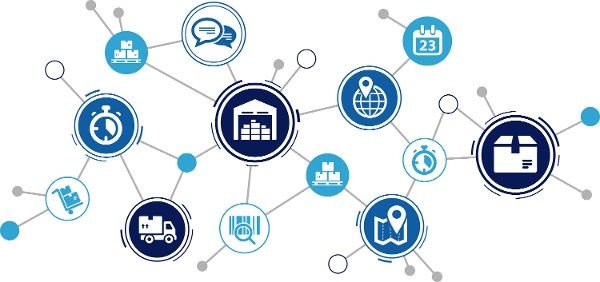
Taking Back Supply Chain Control
May 16, 2018
For some companies, managing their OEM supply chain is akin to herding cats. It doesn’t matter if you’re making a high-volume, low-cost product or a highly-customized, project-based manufacturing ecosystem; the challenges of keeping everything running smoothly can often be too much for even the best supply chain manager.
Why does this happen? In most cases, it is because the organization doesn’t value the strategic importance of their supplier-partners. However, it does not need to be this way if you can take back control of your supply chain.
Building Consensus
At its core, supply chain management is about making sense of complexity as today’s global supply chains involve multiple levels of suppliers and customers – all with their own needs, requirements, and capabilities. While this could be a recipe for chaos, it is also an opportunity to build consensus.
 The customer may be always right, but in the real world, some customers are more right than others. As such, supply chain managers need to be adept at balancing their needs with the realities on the ground.
The customer may be always right, but in the real world, some customers are more right than others. As such, supply chain managers need to be adept at balancing their needs with the realities on the ground.
Much of this comes from the realization that they are not in charge of their supply chain. As such, a smoothly-functioning supply chain requires commitment from everyone. This is not the law of natural selection where the strong eat the weak; this is accomplishment through cooperation. In short, a rising tide raises all boats.
Moving Beyond Survival Mode
As mentioned, to gain OEM supply chain control, you need to realize that you are not in control. Success is about defining a symbiotic relationship that benefits all participants. This might not sound like your current supply chain, as you might be struggling to overcome issues with suppliers and customers regardless of where they are located.
Moving beyond survival mode starts by taking stock of the state of your supply chain today – warts and all. From there you can begin to identify those nagging inefficiencies and work with partners to define how the future state will function.
Keep in mind, this is not a kaizen blitz which can knock down some low-hanging fruit over the course of a week. In fact, this is probably the last thing you want to do, as this approach will only cause problems in other areas.
Instead, you want to use this process to deepen your understanding of the most vital components of your supply chain – be it your metal fabrication partner a few states away or your plastic injection molding supplier halfway around the world. An initial analysis can open doors to pursue the improvements needed to make your life easier.
In God We Trust, All Others Bring Data
While this quote from Dr. W. Edwards Deming is undeniably true, the reality is that we live in a world awash with data. This can be both a blessing and a curse.
On the plus side, a certain amount of supplier transparency can make sure that everyone in the supply chain is rowing in the same direction. However, too much data, or even worse, bad data, can make your life miserable.
Therefore, you need to find a middle ground when it comes to data. This starts by keeping three things in mind when it comes to the data you track:
- How will this data help you meet the needs of your customers? If the data you are collecting doesn’t help you keep your customers happy, then it is probably the wrong data.
- How will this data help to manage your inventory? How many times have you had to deal with having too much of the wrong items in stock, while facing delays in the parts you need to fulfill your mission? Use data to ensure you have what you need, when you need it.
- How will this data help to drive improvement? Think about all the times you’ve put significant effort into a change management program to only end up scrapping the initiative because it did not have the desired effect? This usually happens because the initiative kicked off with very little data on how the change will make things better.
By the way, there is one more thing you can use your data for – supply chain integration.
 Just the act of collecting data will highlight gaps between customers and partners, and this creates an opportunity to work closer. Not only will this help you to deepen your relationships with your partners, but it will give you the opening you need to take back control of your supply chain. See how you can increase data transparency and supplier-partner integration with fabrication partner Miller Fabrication Solutions by scheduling a consultation today.
Just the act of collecting data will highlight gaps between customers and partners, and this creates an opportunity to work closer. Not only will this help you to deepen your relationships with your partners, but it will give you the opening you need to take back control of your supply chain. See how you can increase data transparency and supplier-partner integration with fabrication partner Miller Fabrication Solutions by scheduling a consultation today.
You Might Be Interested In
Industrial Fabrication
December 17, 2018
The Making of a Manufacturing Comeback